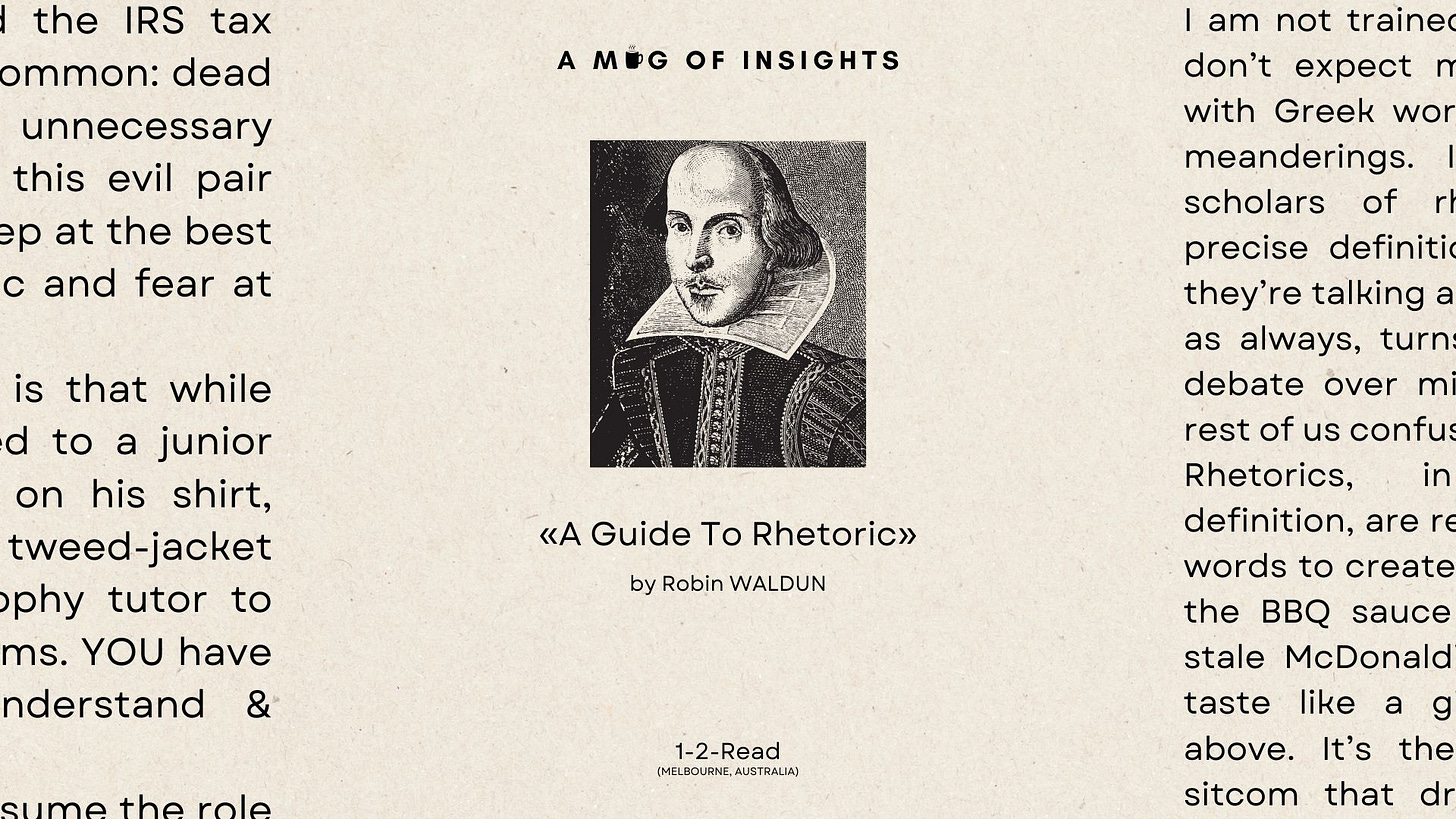[1-2-Read] A Guide To Rhetoric That Won't Put You To Sleep
How to Structure a Paragraph, Think in Threes, Play on Opposites, Ask A Question, and Twist a Phrase
This is another repost of the 1-2-Read newsletter for paid subscribers. Leave me any feedback below, and I’ll decide on the next issue’s topic based on your suggestions. Thank you for your support, and we’ll be back next Friday for our regular columns.
(1) The Idea: Learn to Structure a Paragraph, Think in Threes, Play on Opposites, Ask A Question, and Twist a Phrase
The word ‘rhetoric’ and the IRS tax code have one thing in common: dead air that stinks of unnecessary complexity. This is why this evil pair either puts people to sleep at the best of times or wreaks havoc and fear at the worst of times.
But the only difference is that while taxes can be outsourced to a junior accountant with stains on his shirt, you can’t hire a shabby tweed-jacket wearing tenured philosophy tutor to solve your writing problems. YOU have to be the one to understand & practice it.
So in this issue, let me assume the role of that shabby substitute tutor and walk you through everything I know about rhetoric. Hopefully, after this long read, you’ll not only get a clearer understanding of how to incorporate rhetoric into your writing, but also develop a lifelong passion for the inner workings of language.
As for your taxes, maybe stick with the junior accountant.
0: Rhetoric Isn’t Scary
I am not trained as a classicist, so don’t expect me to confuse you with Greek words and philological meanderings. In fact, not even scholars of rhetoric know the precise definitions of the devices they’re talking about. The academy, as always, turns everything into a debate over minutiae, leaving the rest of us confused.
Rhetorics, in the simplest definition, are recipes for arranging words to create special effects. It’s the BBQ sauce that makes those stale McDonald’s chicken nuggets taste like a gift from the Lord above. It’s the one-liner from a sitcom that drops you down on your knees with laughter. It’s the glue that makes lyrics stick in your head. And all this, and more, can be learned and practiced by you.
I owe a lot of my understanding of rhetoric to Mark Forsyth, specifically, his book The Elements of Eloquence. In it, he correctly identified the easiest way to learn rhetoric: realise that you’re probably unconsciously recognising/using rhetorical devices already.
Starting with a silly example from a line in The Office:
“Well, well, well, how the turn tables.”
What looks like a silly meme-phrase is actually an example of Hyberbaton: an inversion of normal word-orders to create either a poetic or humorous effect.
Or take this line that everyone shouts out whenever they spot a friend running to the toilet with a full bladder:
“Run, Forrest, run!”
This is a Diacope: a word sandwich where the first word is repeated at the start and the end of a phrase (As in: “Bond, James Bond), making the line more memorable.
In case you’re already falling asleep at all these labels for rhetorical devices, let me reassure you that it’s completely unnecessary to know these labels by heart. You just have to know how they work and learn to spot them and deploy them in your writing. So, with that in mind, here are some of the rhetorical devices I use all the time to strengthen my writing.
1: Structure A Paragraph
Keep reading with a 7-day free trial
Subscribe to A Mug of Insights to keep reading this post and get 7 days of free access to the full post archives.





